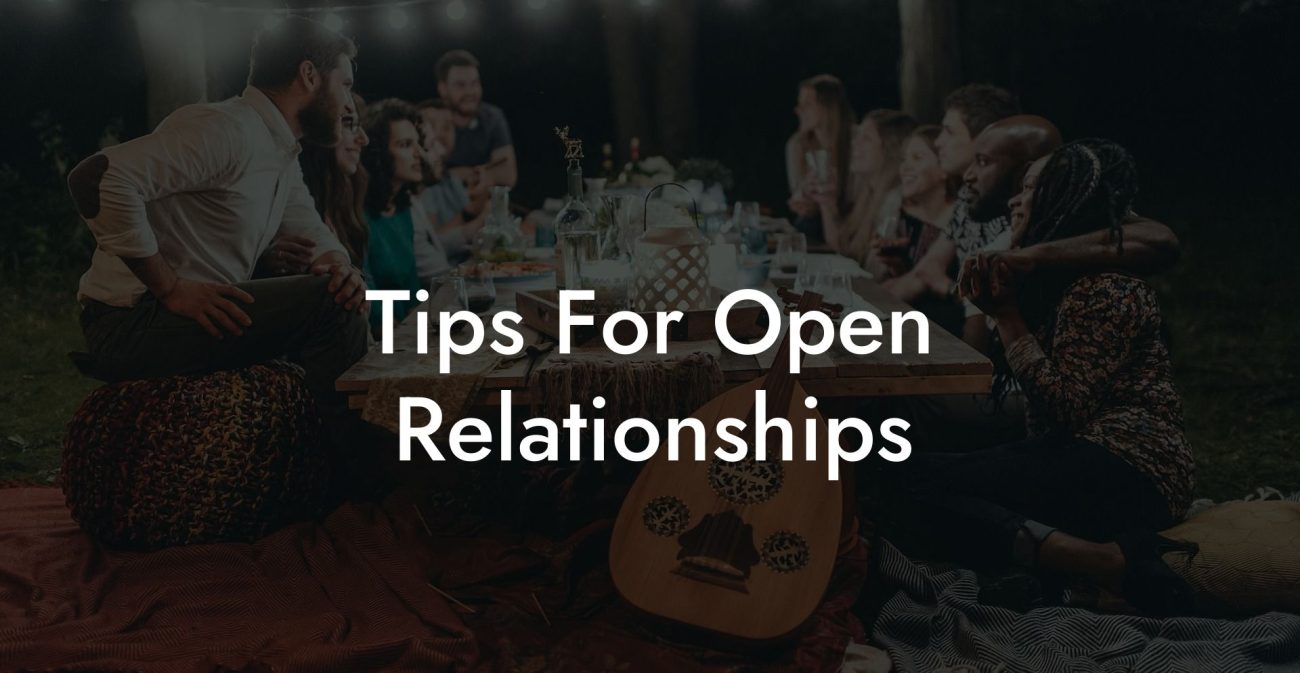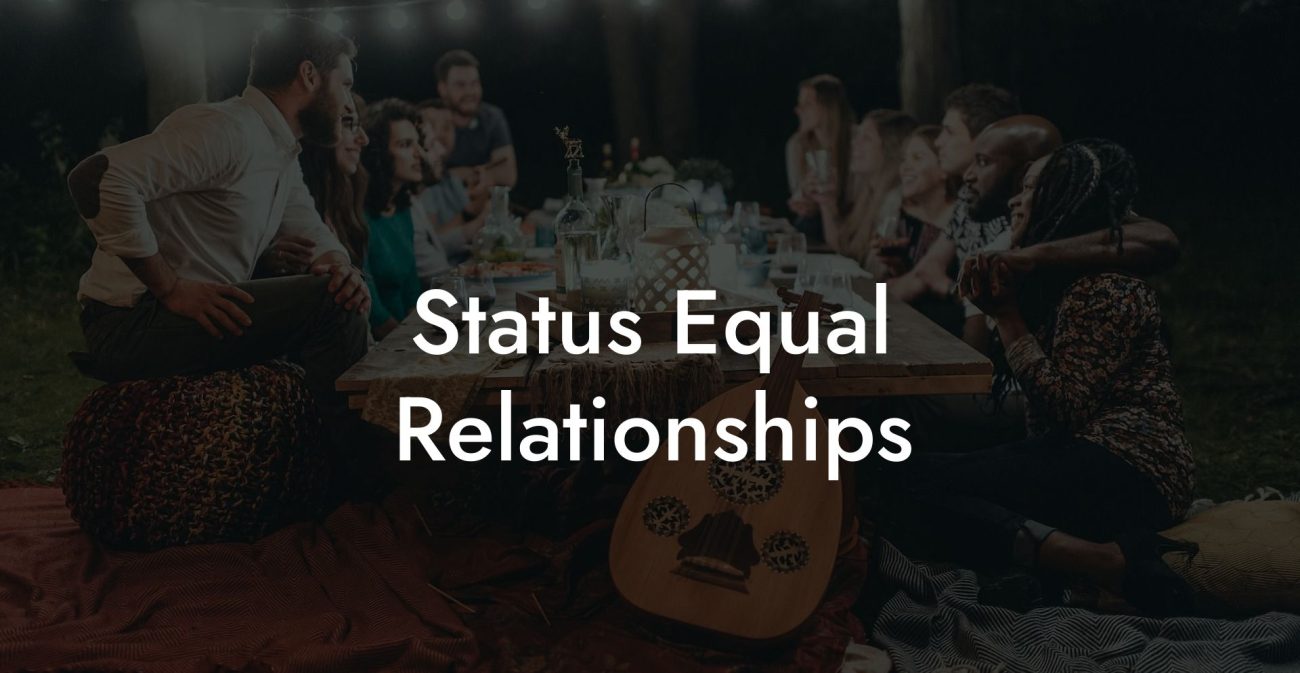Guide to Polygyny

As society’s understanding of love and commitment evolves, traditional models like polygyny are being reexamined through modern ethical lenses. While polygyny has long been a subject of controversy and debate, many contemporary practitioners emphasize the importance of informed consent, open communication, and mutual respect. In this guide, we delve into what polygyny means, how it has been practiced historically, the principles that can lead to ethical relationships today, and practical tips for managing the complexities of plural marriage.
Quick Links to Useful Sections
- Understanding Polygyny
- Defining Polygyny
- Polygyny Versus Other Relationship Models
- Historical and Cultural Context
- Historical Roots of Polygyny
- Cultural Significance in Traditional Societies
- Modern Adaptations and Ethical Polygyny
- Core Principles of Healthy Polygynous Relationships
- Informed Consent and Transparency
- Mutual Respect and Equality
- Clear boundaries and Structured Organization
- Flexibility and Adaptability
- Benefits of Polygyny
- Emotional and Social Richness
- Enhanced Personal Growth and Self-Awareness
- Economic and Practical Advantages
- Broader Perspectives on Love and Commitment
- Challenges of Polygyny and Strategies to Overcome Them
- Managing Jealousy and Emotional Complexity
- Balancing Time and Responsibilities
- Navigating Legal and Social Challenges
- Ensuring Equality and Fairness
- Practical Tips for Success in Polygyny
- Enhance Communication with Regular Check-Ins
- Create and Maintain Relationship Agreements
- Utilize Digital Tools for Time Management
- Prioritize Self-Care and Personal Growth
- Build a Supportive Community
- Plan for Legal and Financial Security
- FAQ: Your Polygyny Questions Answered
Understanding Polygyny
Defining Polygyny
Polygyny is a specific form of polygamy in which one man is married to multiple women simultaneously. It has been practiced in many cultures around the world for religious, social, and economic reasons. Unlike polyamory, which focuses on multiple consensual romantic or sexual relationships without formal commitment, polygyny typically involves marriage, whether legal, religious, or customary.
In modern discussions, polygyny is often redefined to focus on ethical practices. Ethical polygyny emphasizes the need for all parties to enter the relationship voluntarily, with full awareness of its dynamics and with equitable treatment among all spouses.
Polygyny Versus Other Relationship Models
It is important to distinguish polygyny from related models:
- Polyandry: A form of marriage where one woman is married to multiple men.
- Polyamory: Consensual non-monogamous relationships that do not necessarily involve marriage or formal commitment.
- General Polygamy: A broader term that includes any plural marriage, encompassing both polygyny and polyandry.
Understanding these distinctions helps clarify the unique challenges and opportunities that polygyny presents.
Historical and Cultural Context
Historical Roots of Polygyny
Polygyny has deep historical roots and has been practiced in numerous societies across the globe. In many ancient cultures, having multiple wives was a symbol of wealth, power, and social status. For example, in parts of Africa, the Middle East, and Asia, polygyny was integrated into the social fabric as a means of strengthening family alliances, managing resources, and ensuring the survival of communities.
Religious traditions have also played a pivotal role in legitimizing polygyny. Early scriptural texts in Judaism, Islam, and certain branches of Christianity acknowledge or even endorse the practice under specific circumstances. These historical precedents have influenced cultural attitudes toward polygyny, even as modern societies have moved toward more egalitarian relationship models.
Cultural Significance in Traditional Societies
In traditional societies, polygyny was not merely a marital arrangement, it was a complex social institution that provided economic stability and social cohesion. Extended family networks formed through polygynous unions often ensured mutual support, collective labor, and shared responsibilities in both household and community life. While these arrangements sometimes led to competition and jealousy, they also fostered a sense of community and interdependence.
Today, even as legal reforms and changing social norms have reduced the prevalence of polygyny, its historical impact continues to influence cultural narratives about family, gender roles, and the distribution of power within relationships.
Modern Adaptations and Ethical Polygyny
In recent decades, there has been a growing interest in reimagining polygyny through an ethical framework. Modern practitioners of ethical polygyny emphasize principles such as informed consent, transparency, and equality. Unlike some traditional practices that reinforced patriarchal power structures, ethical polygyny seeks to ensure that every participant has agency and that decisions are made collectively.
This modern adaptation aligns with broader movements for social justice and gender equality, challenging conventional norms and offering an alternative vision of plural marriage that is respectful, supportive, and adaptive to contemporary values.
Core Principles of Healthy Polygynous Relationships
Informed Consent and Transparency
The foundation of ethical polygyny is informed consent. Every individual involved must understand the relationship dynamics and agree to participate voluntarily. Transparency is key, discussions about expectations, boundaries, and long-term goals should be initiated early and revisited regularly.
Clear, honest communication helps build trust and minimizes misunderstandings, ensuring that all spouses feel respected and valued.
Mutual Respect and Equality
Historical criticisms of polygyny often focus on power imbalances and gender inequality. In an ethical polygynous relationship, mutual respect is paramount. Each partner’s contributions, whether emotional, practical, or financial, should be acknowledged and valued. Equality in decision-making, household responsibilities, and personal autonomy are essential for creating a balanced and harmonious relationship.
Clear boundaries and Structured Organization
Managing multiple relationships requires clear boundaries and a well-organized structure. Establishing relationship agreements that outline roles, responsibilities, and expectations can prevent conflicts and provide a roadmap for daily life. These agreements should be flexible enough to accommodate changes as relationships evolve.
Regular meetings and written or digital records of agreements can help maintain clarity and accountability.
Flexibility and Adaptability
Relationships are dynamic and ever-changing. Flexibility in a polygynous relationship allows all parties to adapt to new circumstances, personal growth, and shifting needs. This adaptability is crucial for resolving conflicts, renegotiating boundaries, and ensuring that the relationship continues to meet everyone’s needs over time.
Benefits of Polygyny
Emotional and Social Richness
One of the primary benefits of polygyny is the potential for a rich, multi-layered support network. Multiple wives can contribute diverse perspectives, skills, and emotional resources, creating a resilient family structure where each member benefits from collective support. This can lead to a deeper sense of community and belonging.
Enhanced Personal Growth and Self-Awareness
Navigating the complexities of a polygynous relationship encourages personal development. The challenges and rewards of managing multiple intimate bonds foster greater self-awareness, improved communication skills, and emotional maturity. Each partner can learn from the others, leading to a more profound understanding of their own needs and aspirations.
Economic and Practical Advantages
Historically, polygyny has been associated with practical benefits such as shared household responsibilities and pooled resources. In a modern context, these advantages can still be significant. By collaborating on financial matters, childcare, and daily tasks, a polygynous household can achieve a level of economic efficiency and mutual support that is often difficult to replicate in smaller family units.
Broader Perspectives on Love and Commitment
Polygyny challenges the notion that love and commitment are finite resources. Instead, it promotes a more expansive view of relationships, where love can be shared and multiplied. This broader perspective can lead to a more inclusive understanding of commitment, fostering a family environment that values diversity and collective growth.
Challenges of Polygyny and Strategies to Overcome Them
Managing Jealousy and Emotional Complexity
One of the most significant challenges in polygynous relationships is managing feelings of jealousy and insecurity. When multiple intimate relationships exist, emotional complexities can arise. It is essential to address these feelings proactively through open dialogue, regular emotional check-ins, and, if necessary, professional counseling.
Techniques such as mindfulness, active listening, and group therapy sessions can help transform negative emotions into opportunities for growth and deeper connection.
Balancing Time and Responsibilities
Coordinating schedules and dividing responsibilities among multiple spouses can be demanding. Effective time management is crucial to ensure that each partner receives the attention they need. This might involve using shared calendars, scheduling dedicated one-on-one time, and holding regular family meetings to coordinate household tasks.
Clear communication about priorities and expectations helps mitigate conflicts related to time management.
Navigating Legal and Social Challenges
In many regions, legal frameworks only recognize monogamous marriages, which can create significant challenges for polygynous families in areas such as inheritance, custody, and spousal rights. Additionally, social stigma and cultural misconceptions may add further stress.
To overcome these challenges, it is important to seek legal advice, document relationship agreements, and build a supportive community. Advocacy and education can also play roles in challenging stereotypes and promoting understanding.
Ensuring Equality and Fairness
Maintaining equality among multiple wives requires deliberate effort. Historical practices of polygyny have often been criticized for reinforcing gender hierarchies, but modern ethical polygyny seeks to dismantle these structures. Regular discussions, shared decision-making processes, and transparent agreements can help ensure that all partners feel valued and heard.
Practical Tips for Success in Polygyny
Enhance Communication with Regular Check-Ins
Establish a routine for both group and individual check-ins to discuss feelings, expectations, and any challenges. Using communication tools such as group chats, video calls, and shared calendars can help keep everyone connected.
- Hold weekly or monthly meetings with all partners to review the relationship dynamics.
- Use "I" statements to express your feelings without blaming others.
- Schedule one-on-one time to ensure personalized attention for each spouse.
Create and Maintain Relationship Agreements
Develop a clear, written agreement outlining roles, responsibilities, financial arrangements, and personal boundaries. This document should be revisited regularly to adapt to any changes in the relationship.
- Include specifics on household duties, childcare, and financial contributions.
- Ensure that all partners participate in creating and revising the agreement.
- Keep digital or physical copies accessible for future reference.
Utilize Digital Tools for Time Management
Leverage technology to coordinate schedules and manage responsibilities. Shared calendars and scheduling apps can help prevent conflicts and ensure that each partner’s time is valued.
- Create a shared digital calendar for important dates and events.
- Use task management apps to assign and track household chores.
- Plan and communicate your schedule well in advance to all partners.
Prioritize Self-Care and Personal Growth
Taking care of yourself is essential for contributing positively to your relationships. Engage in regular self-care practices such as exercise, meditation, hobbies, or time alone to recharge emotionally and physically.
- Establish a daily routine that includes time for relaxation and personal interests.
- Encourage each partner to develop their own self-care practices.
- Consider professional counseling or therapy to work through emotional challenges.
Build a Supportive Community
Connect with others who share similar experiences by joining online forums, local meet-ups, or support groups dedicated to ethical non-monogamy and polygyny. Community support can provide practical advice and emotional reassurance.
- Engage in discussions on platforms such as Reddit’s r/polyamory or specialized Facebook groups.
- Attend workshops and webinars on alternative relationship models.
- Share your experiences and learn from others to build a network of support.
Plan for Legal and Financial Security
Although polygynous marriages may not be legally recognized in many jurisdictions, taking steps to document and protect your interests is essential. Consult with legal professionals who specialize in family law and alternative relationship structures.
- Keep detailed records of financial arrangements, relationship agreements, and household responsibilities.
- Seek periodic legal advice to stay informed of any changes in the law that may affect your family.
- Educate yourself on your rights and explore advocacy groups working toward legal reforms.
FAQ: Your Polygyny Questions Answered
1. What is polygyny?
Polygyny is a form of marriage in which one man is married to multiple women simultaneously. It is a specific type of polygamy with deep historical, cultural, and religious roots.
2. How does ethical polygyny differ from traditional practices?
Ethical polygyny emphasizes informed consent, mutual respect, and equality among all partners. It seeks to address historical power imbalances and ensure that each wife’s needs and rights are respected, in contrast to traditional practices that often involved hierarchical structures.
3. What are the benefits of polygynous relationships?
Benefits include a diverse support network, shared economic and household responsibilities, opportunities for personal growth, and an expansive view of love and commitment that challenges conventional norms.
4. What challenges might arise in a polygynous relationship?
Common challenges include managing jealousy and emotional complexity, balancing time and responsibilities, navigating legal and social issues, and ensuring equality among all partners.
5. How can communication be improved in polygynous relationships?
Regular check-ins, active listening, and the use of digital tools such as group chats and shared calendars are effective ways to enhance communication and ensure that all partners feel heard.
6. What practical tools can help with time management?
Shared calendars, scheduling apps, and digital task management tools are useful for coordinating schedules and managing household responsibilities in a multi-partner relationship.
7. How can I protect my legal and financial interests in a polygynous union?
Documenting relationship agreements, maintaining detailed financial records, and consulting with legal professionals specializing in family law and alternative relationships are crucial steps to safeguard your interests.
8. Where can I find additional resources and community support?
Additional resources can be found through online forums, specialized Facebook groups, podcasts like "Multiamory" and "Polyamory Weekly," and books such as "The Ethical Slut" and "More Than Two." Attending workshops and webinars on ethical non-monogamy can also provide valuable insights.
Resources and Community Support: Your Next Steps in Polygyny
- "The Ethical Slut" by Dossie Easton & Janet Hardy – A foundational book that explores ethical non-monogamy and provides insights into managing multiple relationships.
- "More Than Two" by Franklin Veaux & Eve Rickert – An in-depth resource on building and sustaining multiple relationships, offering practical advice applicable to polygyny.
- Podcasts: Tune into "Multiamory" and "Polyamory Weekly" for engaging discussions and personal stories about alternative relationship models.
- Online Communities: Connect with forums such as r/polyamory or specialized Facebook groups dedicated to ethical non-monogamy.
- Workshops and Webinars: Attend events focused on alternative relationship models to gain practical tips and network with like-minded individuals.
By exploring these resources and integrating the practical tips provided in this guide, you can build a foundation for a respectful, balanced, and fulfilling polygynous relationship. Embrace continuous learning, open communication, and self-care as you navigate the complexities of polygyny, and discover how ethical practices can transform your experience of love and commitment.
Lost & confused by all of the terms, types and seemingly made up 3 letter acronyms?? We've got you. Check out our Ethnical Non-Monogamy Dictionary >>
Useful Interruption: Not sure which relationship vibe fits you best? Take our Relationship Test, it’ll give you the real insight into your natural relationship style. Then, dive into our binge-worthy guides (from the tried-and-true to the “wait, that’s a thing?”) and find the perfect relationship type for your life:
- Monogamy
- Open Relationships
- Ethical Non-Monogamy
- Solo Polyamory
- Non-Hierarchical Polyamory
- Hierarchical Polyamory
- Relationship Anarchy
- Swinging
Now back to the main article but yeah take the test...












